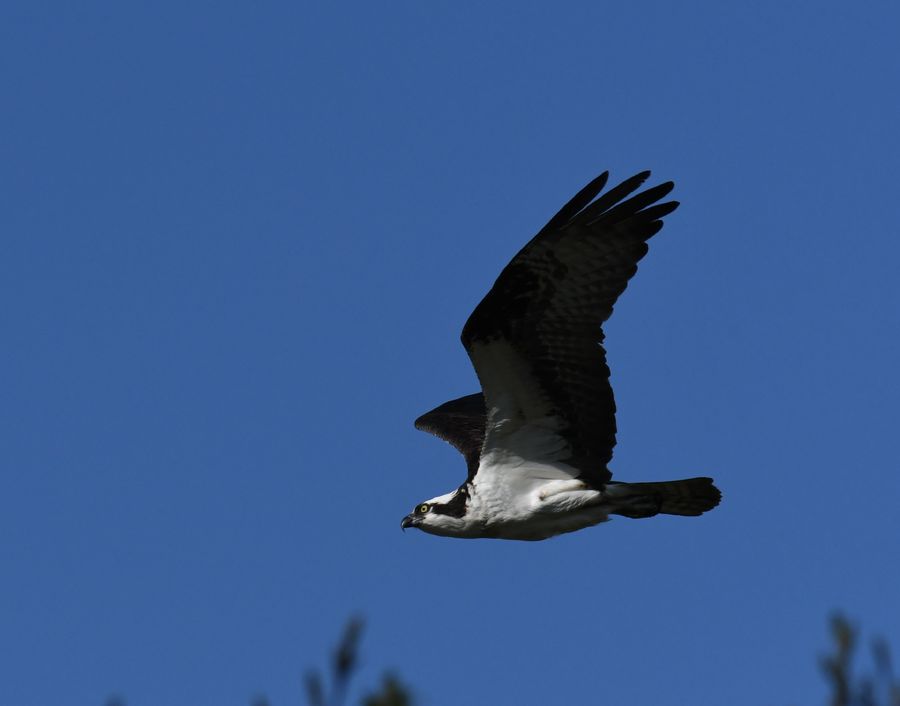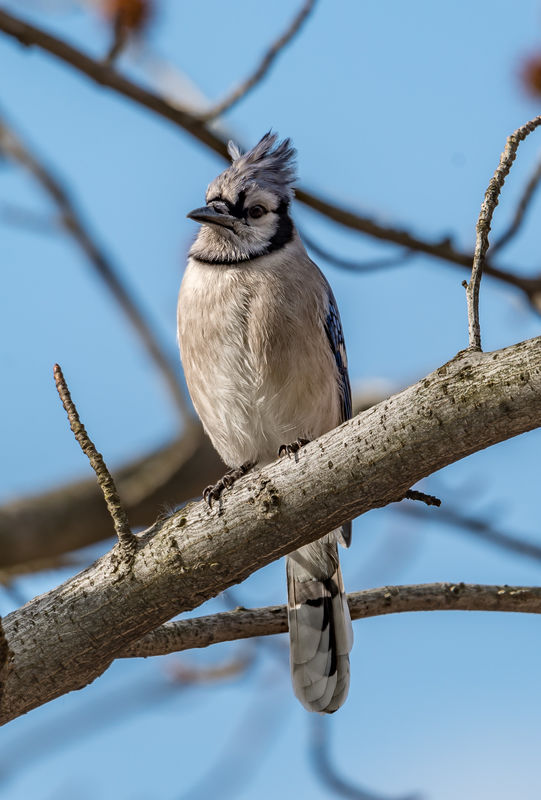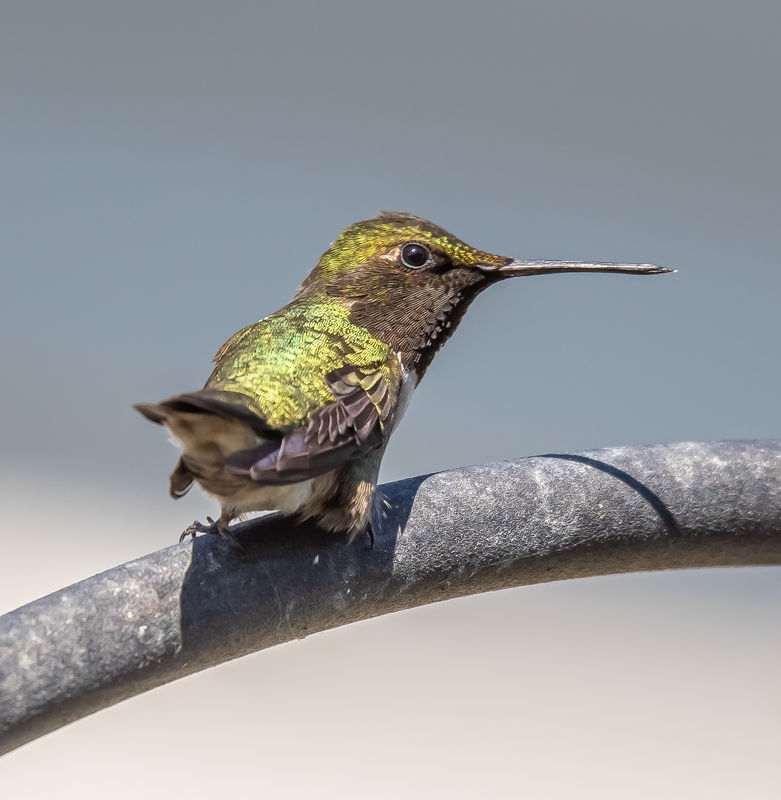Expensive lenses better?
Aug 23, 2021 21:47:27 #
Hello,
I have always wondered exactly what makes more expensive lenses "better". I have read that they have very fancy coatings and use better glass, but I always have wondered how that actually shows up in the pictures. I have never had the money to buy any such lenses, and since I don't have any first-hand experience with them, I am asking for some more experienced eyes to help me with this. Below are two pictures that I took. The Blue Heron was using a Nikon D7200 with a 200-500mm lens and the Osprey was taken using a Nikon D500 with a 70-300mm P lens. Both images are untouched by any photoshopping, just cropped. What would improvements would I see if I had the more expensive lenses? Better colors? Sharper detail? Something else?
As always, thank you in advance for your help, I always learn a lot here.
I have always wondered exactly what makes more expensive lenses "better". I have read that they have very fancy coatings and use better glass, but I always have wondered how that actually shows up in the pictures. I have never had the money to buy any such lenses, and since I don't have any first-hand experience with them, I am asking for some more experienced eyes to help me with this. Below are two pictures that I took. The Blue Heron was using a Nikon D7200 with a 200-500mm lens and the Osprey was taken using a Nikon D500 with a 70-300mm P lens. Both images are untouched by any photoshopping, just cropped. What would improvements would I see if I had the more expensive lenses? Better colors? Sharper detail? Something else?
As always, thank you in advance for your help, I always learn a lot here.
Aug 23, 2021 21:52:06 #
Best to compare a <different> lens with the same camera, same setting (subject), same ISO, same focal length, and same focus point, preferably on a tripod, no cropping, so the only thing changing is the lens.
Changing things adds more variables and makes the comparison more difficult.
Is one of those two referenced lenses more expensive?
Changing things adds more variables and makes the comparison more difficult.
Is one of those two referenced lenses more expensive?
Aug 23, 2021 22:04:26 #
grahamfourth wrote:
Hello, br br I have always wondered exactly what ... (show quote)
If there weren't advantages to top of the line lenses, Professionals would not buy and use them. The 200-500 I have is an excellent lens. Though I don't have one, the 500 is purportedly lighter and better. Through a lot of decades, I often haven't had the very best, they were beyond my budget, but I have always had the best I could afford. That has paid off. Good photos can be gotten on occasion with inexpensive lenses, IMO good photos can be gotten consistently, given skill, with excellent lenses.
Aug 23, 2021 22:04:31 #
This is my opinion--None. I shoot the Nikkor 70-300P lens and the Nikkor 200-500 on a D 7200. I suspect the 70-300 is not as robust as the more expensive version but it is light, as sharp as the 200-500 within its limits. The 200-500 is anything but inexpensive at just over $1,300 new.
Aug 23, 2021 22:04:37 #
As long as you are happy with what you see, does it really matter how much it costs?
Aug 23, 2021 22:11:52 #
A good question. My inquiry is primarily just so that I can learn and understand more about lenses.
Aug 23, 2021 22:19:08 #
I own both expensive lenses and modest / cheaper lenses. I've also rented lenses that are too expensive to own. If expensive means better, that 'better' tends to demonstrate as:
A fast constant aperture, such as f/4 for 500mm or longer or f/2.8 or faster for shorter.
Sharpness at the widest aperture, with no reason to step down except for more depth of field for the composition.
Fast and accurate autofocus, many times because of the amount of light they pass to the sensor, more than perfection of the AF motor in the lens.
Character, as in great and / or unique colors / saturation / contrast, things that show from images from this lens, distinct from other lenses on the same camera.
Cutting edge stabilization, especially for the longer focal lengths.
Today, the most expensive also have cutting edge materials to lighten the load, where the optics might not be much better than older / heavier versions.
When you get above 400mm, your choices get fewer and become almost exclusively the expensive. Your two lenses shown here have many of these attributes, although the 70-300 might look better at f/8 to f/11. You also might find all lenses on all cameras look great with a single high-precision AF point focused in the subject's eye.
If you pay attention to lens reviews, you don't need to pay the most for 'expensive' lenses. Really sharp lenses, with fast constant apertures, and character are readily available without the highest price tags.
A fast constant aperture, such as f/4 for 500mm or longer or f/2.8 or faster for shorter.
Sharpness at the widest aperture, with no reason to step down except for more depth of field for the composition.
Fast and accurate autofocus, many times because of the amount of light they pass to the sensor, more than perfection of the AF motor in the lens.
Character, as in great and / or unique colors / saturation / contrast, things that show from images from this lens, distinct from other lenses on the same camera.
Cutting edge stabilization, especially for the longer focal lengths.
Today, the most expensive also have cutting edge materials to lighten the load, where the optics might not be much better than older / heavier versions.
When you get above 400mm, your choices get fewer and become almost exclusively the expensive. Your two lenses shown here have many of these attributes, although the 70-300 might look better at f/8 to f/11. You also might find all lenses on all cameras look great with a single high-precision AF point focused in the subject's eye.
If you pay attention to lens reviews, you don't need to pay the most for 'expensive' lenses. Really sharp lenses, with fast constant apertures, and character are readily available without the highest price tags.
Aug 23, 2021 22:58:56 #
grahamfourth wrote:
Hello, br br I have always wondered exactly what ... (show quote)
A few years ago I had one of those "expensive" lenses - a 600mm F4 AF-S II Nikkor. It was crisp, fast, extremely well-built. I think the list price may have been around $10k. But it weighed almost 11 lbs. By the time I added a tripod+head, backpack to carry it etc, I was easily at about 30 lbs. So looking for something lighter, I looked at all of the usual suspects - 150-600 Tamron (the G2 was not available), the 150-600 Sigma Contemporary, the 200-500 Nikkor, the 80-400 Nikkor - and even stuff like a 300 F2.8 + 1.4 TC. My goal was to come as close as I could to the image quality of the 600mmF4, but still be hand-holdable. I looked at the 1000s of pictures I took with the 600F4 and came to the conclusion that the majority of the images were taken stopped down for DoF optimization. The 600 was not sharper stopped down, but the DoF was better.
So . . .
If I could get a lens that gave me similar image quality at F7.1 or F8, and saved me 5 lbs, it would be worth investigating. I came close with the 200-500, but the lack of robust build quality and the fact it was only 500mm and it's performance with a 1.4 TC III left a lot to be desired, I did not pull the triiger on one. I had borrowed one twice from Nikon's NPS inventory, so I was very familiar with the lens. The game changer was the Sigma Sport, which ticked all the boxes - no worries about getting caught in the rain with it (since field proven), super hard front and rear element coatings, built like a tank (also field proven), and image quality that was significantly better than the competition. I sold my 600mmF4 a year later, and frankly don't miss it. I also don't use a tripod 98% of the time with that lens.
In my opinion, the images at F7.1 or F8 with the Sigma Sport hand held are every bit as good as those shot with the 600mmF4 at similar apertures even when used on a tripod.
The 600F4 focused faster, provided a brighter viewfinder for composing and manual AF. But the Sigma is lighter, more portable, 20% of the price of the big expensive alternative, and has turned out to be a fine walkaround lens for me when I am out looking for things that move quickly and mostly fly around nervously.
So to answer your question - how an image is processed will determine a lot of the differences in color and to some degree, contrast. But fine detail capture is a weak point with many more modestly priced lenses, especially third party. However, as you can see, the fine detail capture of the Sigma Sport is exceptional, and I can say, without hesitation, that it is fulfilling its role as a $1800 replacement for the $10,000 lens.
This is not a universal thing - you really do have to make direct comparisons. Some less costly lenses are real values, others not so much. In this case, the expensive lens does not offer $8K worth of benefit over the cheaper one.
Aug 24, 2021 05:05:45 #
Nice contribution that should add some clarity from an expert for many of us. Thank you, Gene!
Aug 24, 2021 07:24:27 #
Aug 24, 2021 07:55:36 #
I got the 70-200 2.8 II used. I had to got some instructions how to used to a full potential. You have button on the lens what can be programmed. I used Jason Odell birding instruction to do so. The focus speed and accurately is way better vs 200-500. I liked the glass from the 80-200 2.8 better vs 70-200 2.8.
Aug 24, 2021 07:57:23 #
Better? Almost always. How much better and in what ways? Depends on the lens and camera. Many inexpensive lenses are quite excellent and more then satisfactory for most photography. All depends on what you want to do with it.
Aug 24, 2021 08:02:43 #
jbk224
Loc: Long Island, NY
Gene, thanks for the pragmatic evaluation. Of course, followed up with quality pics.
Aug 24, 2021 08:42:20 #
I think you have it backwards.
Better lenses are expensive. Mainly because they use better materials (which are expensive) and are in higher demand.
As always, there are exceptions. "Better" is a subjective evaluation (as is "expensive").
Better lenses are expensive. Mainly because they use better materials (which are expensive) and are in higher demand.
As always, there are exceptions. "Better" is a subjective evaluation (as is "expensive").
Aug 24, 2021 09:09:45 #
zug55
Loc: Naivasha, Kenya, and Austin, Texas
CHG_CANON wrote:
I own both expensive lenses and modest / cheaper l... (show quote)
This is a good summary. There are other, sometimes subtle quality differences where more expensive lenses might be superior. We might add chromatic aberration, barrel distortion, pincushion distortion, vignetting, flare, ghosting. More expensive lenses tend to be faster so you get better bokeh. The quality of the bokeh can vary; a cheaper lens is more likely to give you onion rings or cat's eye bokeh. A more expensive lens may give you a better resolution, an issue that is particularly noticeable when shooting full frame with a 40+ MP sensor. More expensive lenses also may have a more sturdy built suitable for professional use.
Having said that, the quality difference is often very small. The law of diminishing returns definitely is at work here: a lens that is twice as expensive will not be twice as good. Also less expensive lenses tend to be smaller and more portable, which is a distinct advantage when traveling or hiking.
If you want to reply, then register here. Registration is free and your account is created instantly, so you can post right away.













